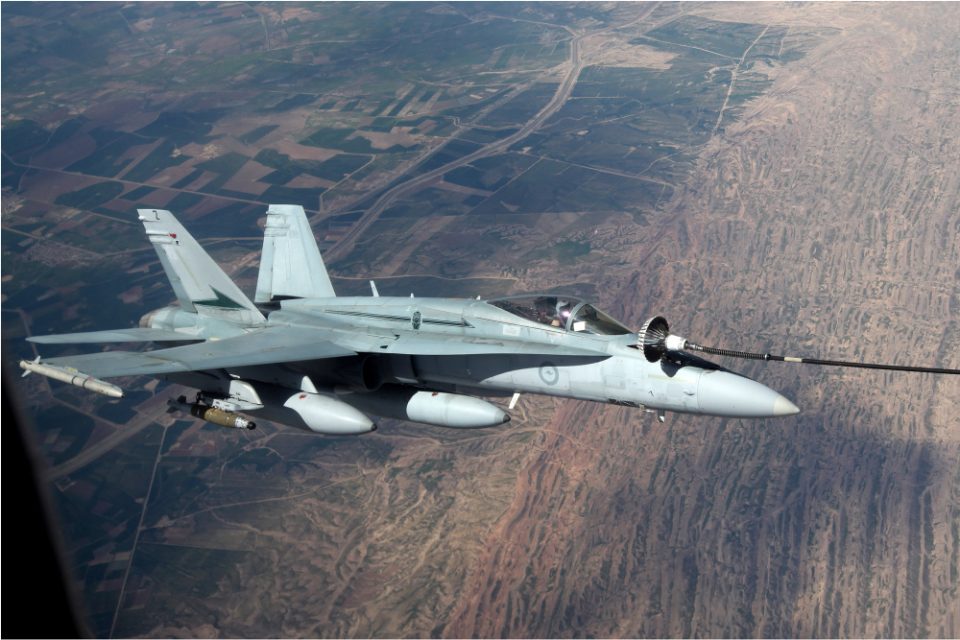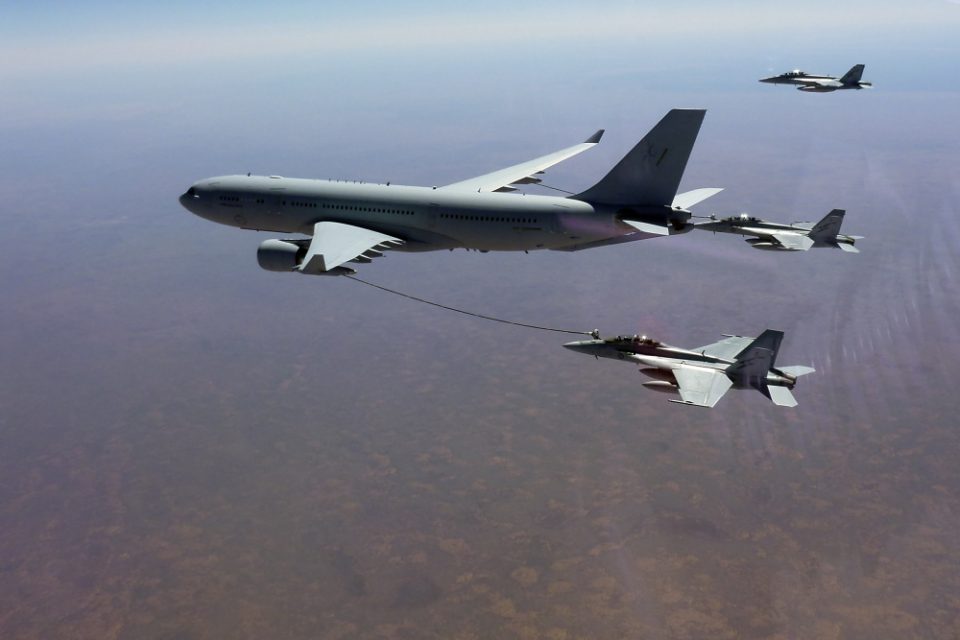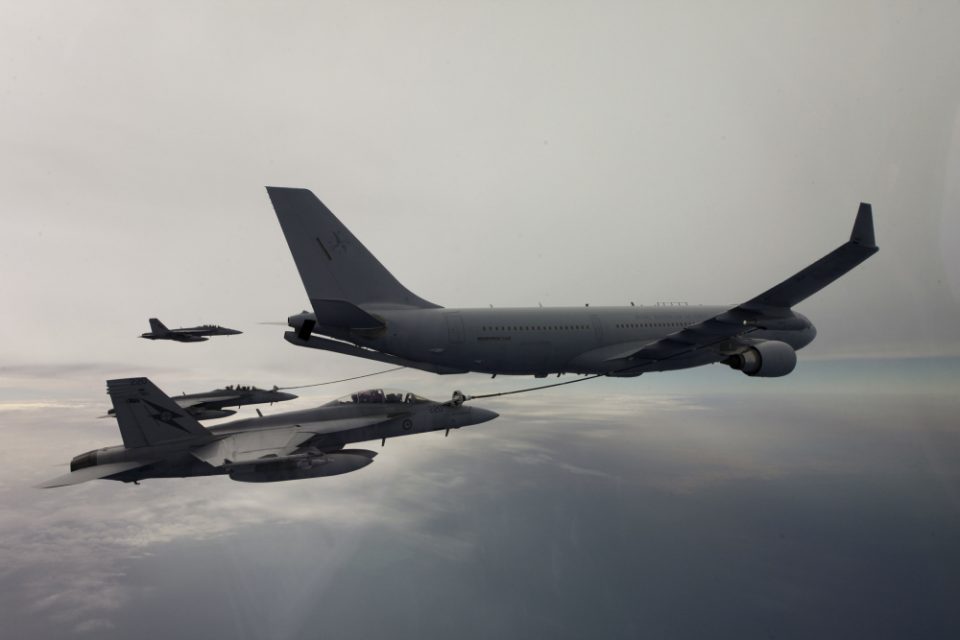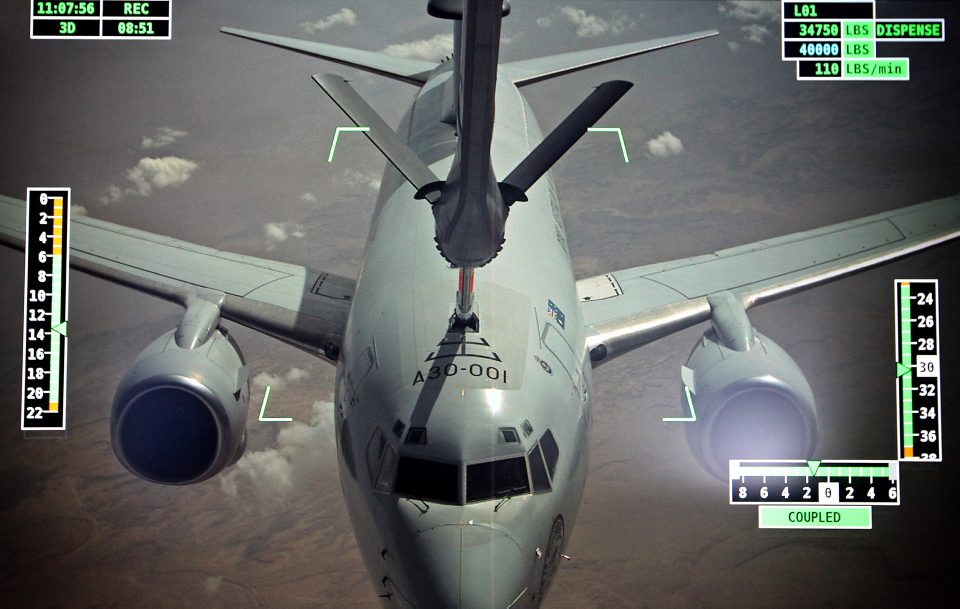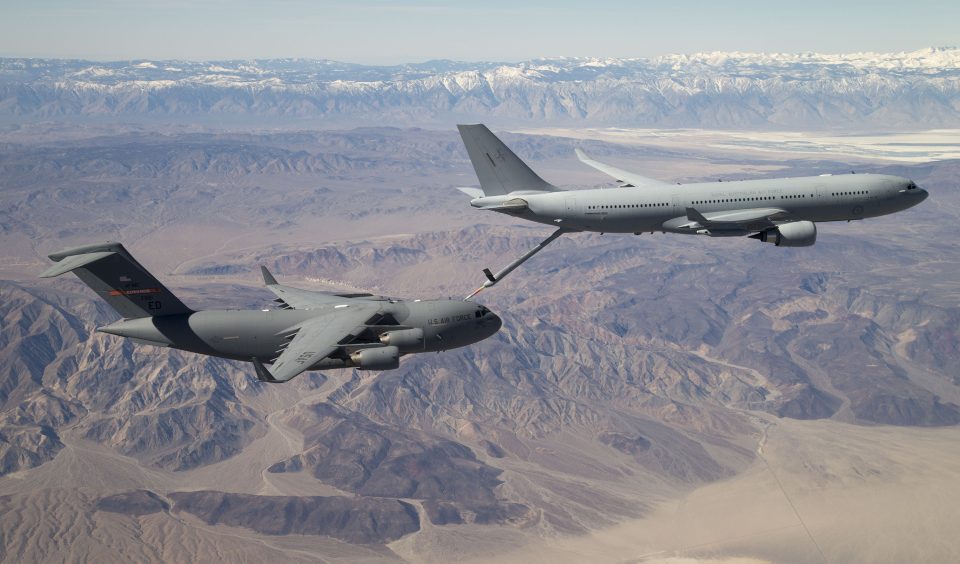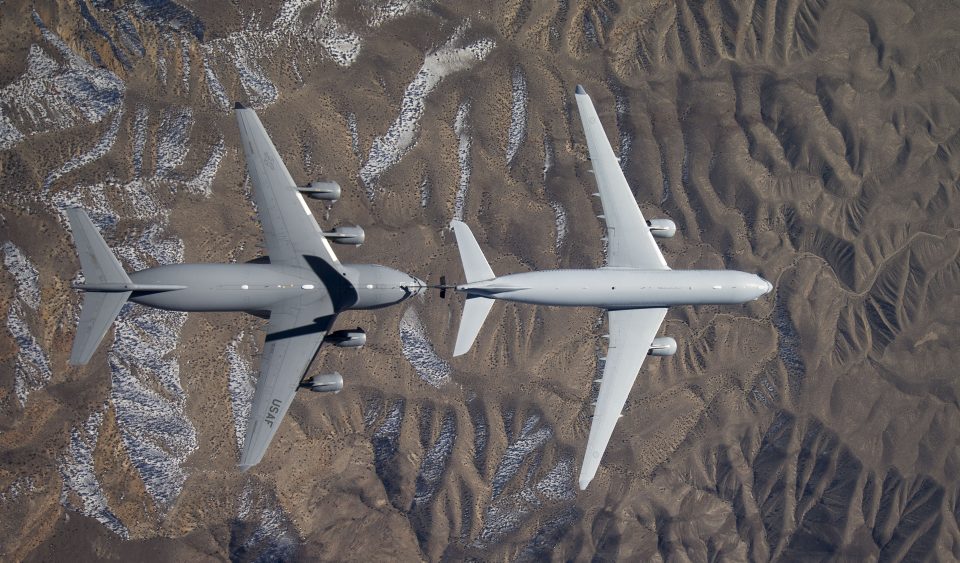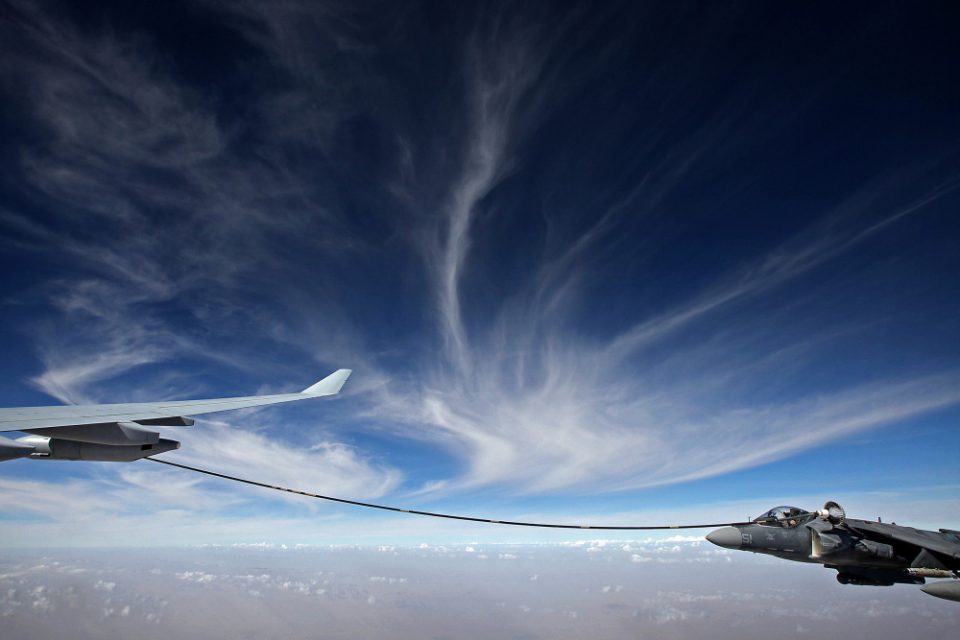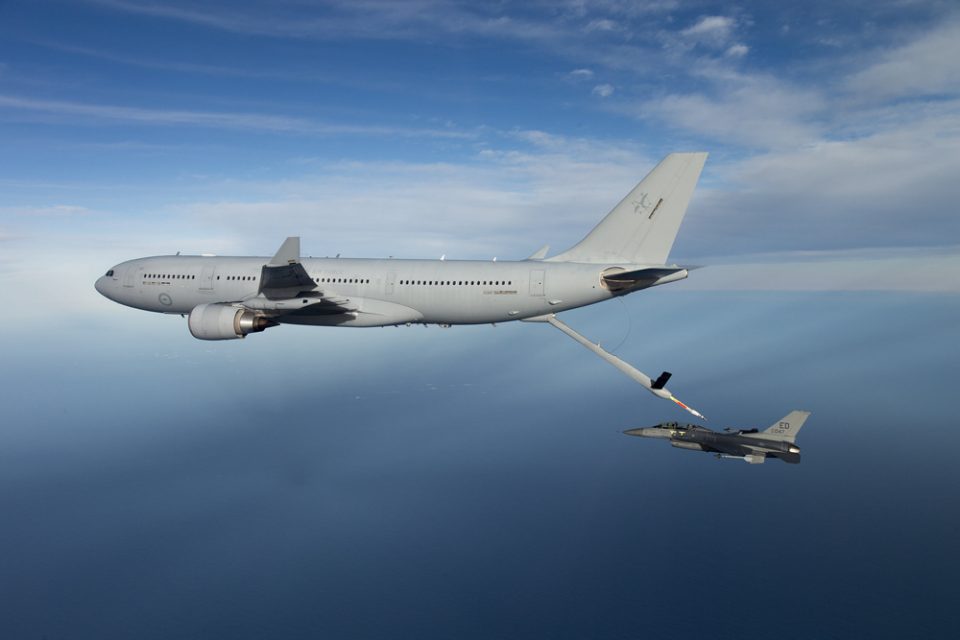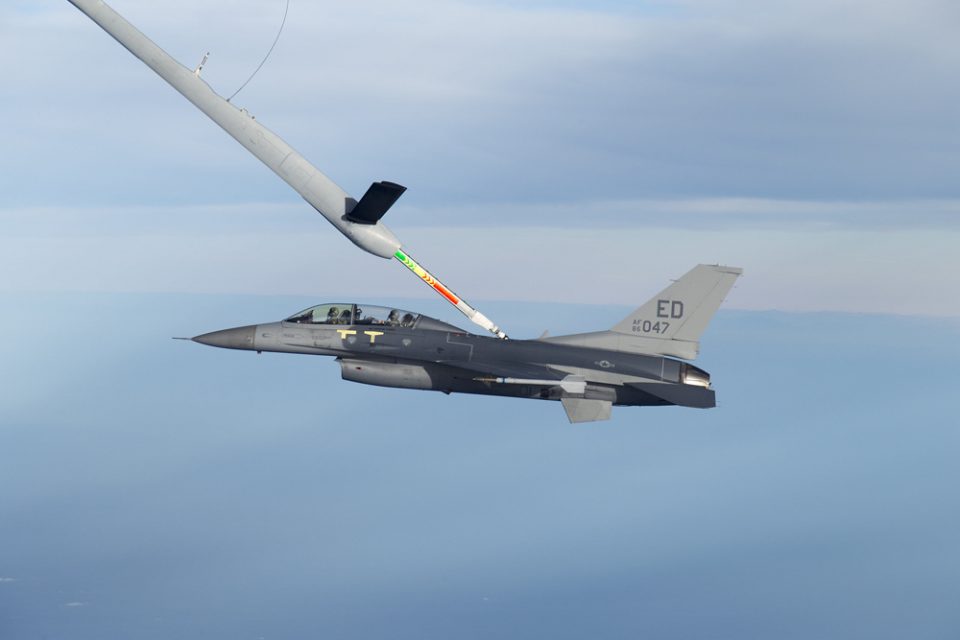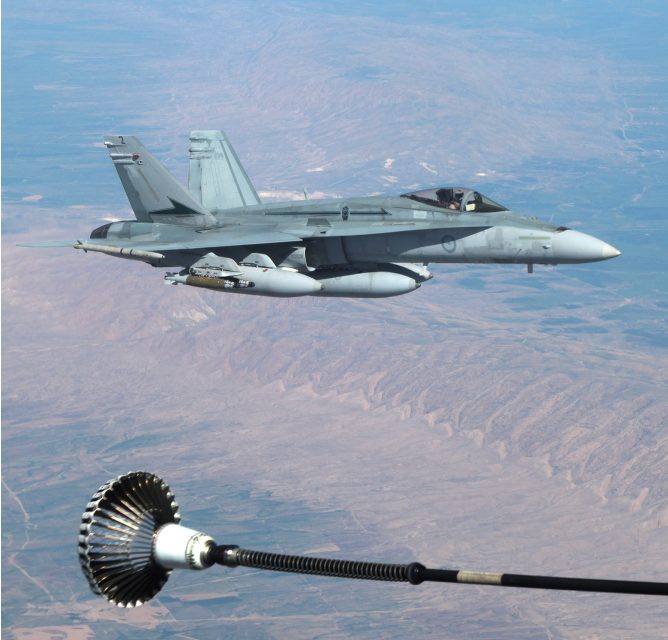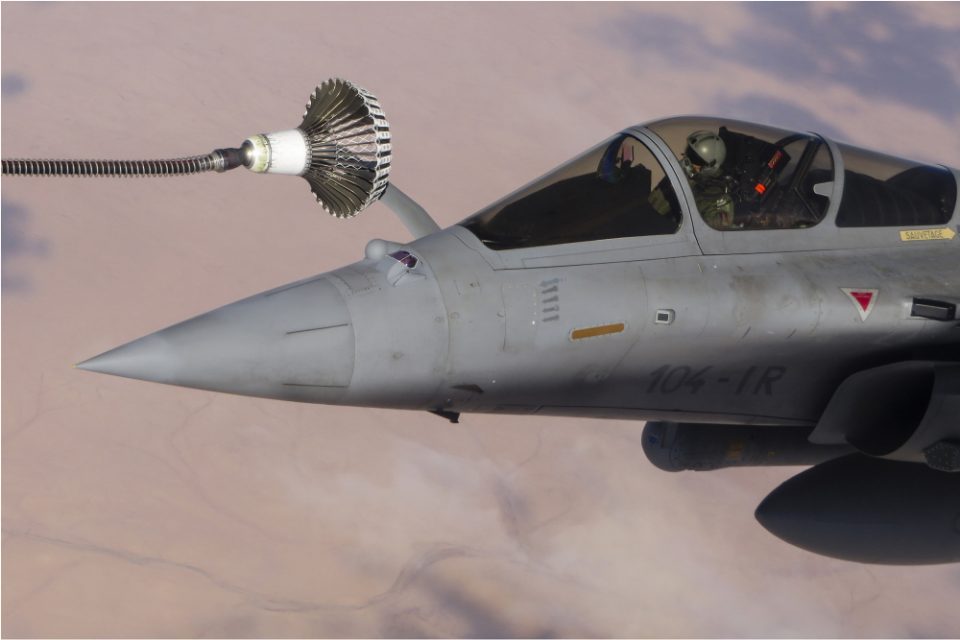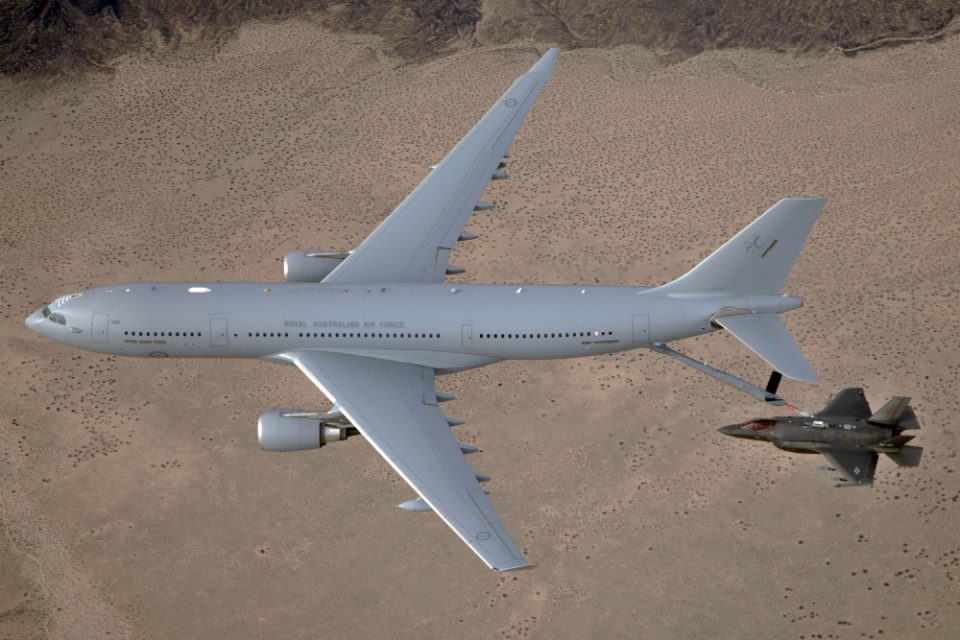2016-06-26 Second Line of Defense attended the Airbus Defence and Space Trade Media Brief held in Munich Germany on June 20 and 21st 2016.
We will be reporting on a number of the presentations and the launch discussion of the new H Force weapons system by Airbus Helicopters.
In this first piece, we will focus upon the presentation by Jerónimo Amador, the head of marketing for the A330 MRTT and other Airbus derivatives.
The first day started with the head of Airbus Defence and Space, Dirk Hoke, greeting the journalists attending the two event. The CEO told the gathering that the new strategy of the sector would be announced in the Fall and launched then. But clearly, the presentations, which followed, highlighted elements of that strategy and foreshadowed the way ahead.
Probably, no two presentations highlighted this more than the one on the tanker or from a group perspective the H force weapons presentations and demonstration on day two. They did so in a core way: these are very flexible, modular, and upgradeable systems, with software upgradeability playing a key role.
The tanker is in the hands of several operational air forces, and as such is becoming an established global fleet.
The user groups are key drivers for further change in the program, and the correlation with the A330 means that innovations driven from the commercial sector can be applied as well to the military derivative, the A330 tanker.
The global nature of the fleet and its operations means that shared experiences are being generated and shared by the users.
The certification leader – the Royal Australian Air Force – in facts has de facto certified a number of aircraft for other users.
The brief by Amador was different from past presentations to the media at the annual Trade Media Briefing (this was the 7th) in that is was really not a company business development presentation but an overview on the operational experience of the Air Forces using the aircraft and its implications for the further development of the aircraft.
In other words, rather than comparing the aircraft to others in the marketplace, it was an overview on the operational experience of the global fleet, which is a measure of the progress of the program itself.
Currently, there are 27 A330MRTT in services with more than 85,000 flight hours, which include 40,000 in the past year.
The Aussie experience was highlighted in which one RAAF tanker has been deployed to the Middle East since September 2014 with 631 sorties flown which is a monthly average of 30 plus and more than 5000 flight hours with a monthly average of 250.
Saudi Arabia has recently completed a flight test campaign to certify their AWACs as well as their legacy tanker, the KE-3.
Amador then focused on the further evolution of the tanker or what he called it as “more than a tanker.”
Progress is occurring on the automatic refueling system, the addition of wideband sitcom, avionics upgrades and enhance self-protection options.
He highlighted that the user groups were key shapers of the way ahead in terms of demand and shared experiences.
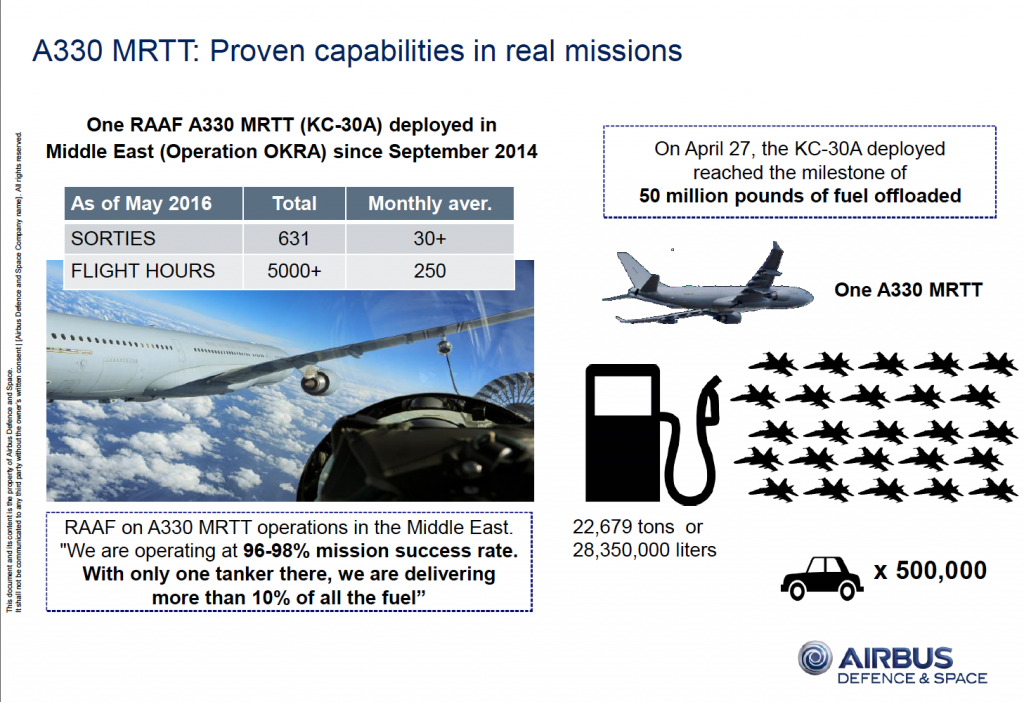
He then focused on how the evolution of the A330 itself was shaping new performance capabilities for the tanker variant, notably in terms of structural modifications, aerodynamic improvements with reduced fuel consumption and avionics computer evolutions.
In short, the Airbus tanker is part of the US and allied operational force and as the Marines told the Aussies in the Middle East, it is the tanker of choice.
In our interview with the KC-30A crew then at Edwards for certification tests earlier this year, they highlighted the evolution of the aircraft and its operational experiences.
Question: With the situational awareness which you have on the plane, you operate the plane often to the fighter rather than forging a track to which the fighter goes.
Could you describe that capability?
Answer: We have a very good communications suite, including SATCOM, on the aircraft, as well as Link 16.
So we can see the fighters in the battlespace and we can see their fuel loads and anticipate where the need for refueling might lie.
It is about positioning yourself efficiently to refuel fighters to get them back in the fight as rapidly as possible; it is not just about being a tracked gas station in the sky.
And with our communications capabilities we can act as a relay between the fighters and other assets in the battlespace and link back to the home base as needed as well.
We can function as a communications relay for the fighter fleet as well.
Question: You are reshaping the tanker culture?
Where do your crews come from and how are they preparing for the boom part of your tanker’s future?
Answer: We have a mixture of people with fighter, tanker and airlift experience.
It is a mixed crew in terms of background.
And we have an exchange with the USAF with the KC-10 are building up our boom training and experience with them as well.
Question: How are the coalition partners responding to your tanker and your efforts?
Answer: We are the tanker of choice.
The amount of respect we are getting from being in the Middle East, I’ve never seen anywhere else. Especially from Marines and the U.S. Navy, we constantly hear: “We want you guys every time we’re going to do a strike package.”
So whenever there’s a strike package happening, they request us when possible: “We want the Aussie KC-30 tanker on board.“
Question: The KC-30A is being used by a number of other Air Forces, although you are the lead country is using the aircraft. What have been your interactions with them?
Answer: We have growing interaction with non-USAF’s which is also broadening our mutual experience.
For example, we have an exchange with the French, whereby the French are leveraging our work to shape their transition strategy with their own tanker.
All of the clearances we are doing for ourselves benefit all the other KC-30A air forces.
And we think we are driving the entire KC-30A enterprise forward as well evolve our experience and our capabilities.
During the tests here, we have an Airbus person with us as we certify the boom.
We have embedded him in our team and put an Australian flag on his back and made him feel like one of us.
And that breaks down the barriers necessary to have the kind of innovation, which we want to see.


